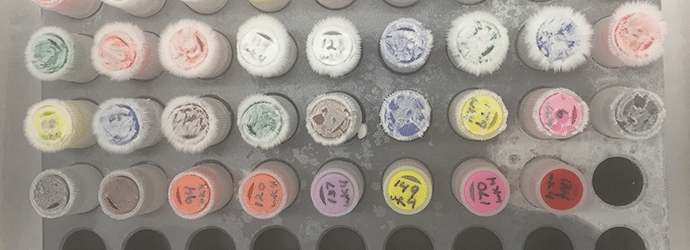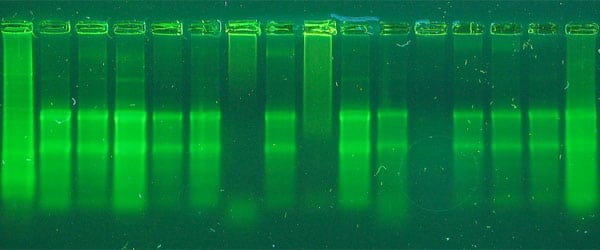Restriction enzymes are a basic tool in the molecular biologist’s arsenal. They’re super easy to use, and virtually essential for cloning and other applications. Restriction enzymes are also a great example of a perfect “tool” from nature that scientists have co-opted for their own use. Here are a few fun facts about restriction enzymes that you may not have heard of:
1. The first restriction enzyme to be described was HindIII, and was originally known as endonuclease R. (see: Smith and Wilcox, J. Mol. Biol. 1970)
2. Did you ever wonder why they are referred to as restriction enzymes? Microorganisms produce enzymes to chew up foreign DNA, “restricting” the genetic content to only native DNA.
3. Restriction enzymes are named from the organism they are derived from. Thus, EcoRI is from E. coli, DraI is from D. radiophilus, ClaI is from C. latum, etc.
Enjoying this article? Get hard-won lab wisdom like this delivered to your inbox 3x a week.

Join over 65,000 fellow researchers saving time, reducing stress, and seeing their experiments succeed. Unsubscribe anytime.
Next issue goes out tomorrow; don’t miss it.
4. The vast majority of restriction enzymes used in the lab are Type II enzymes, which bind short recognition sequences and cut within that sequence. Type IIS and Type IIG enzymes recognize short sequences too, but cut outside of the recognition sequence, to one or both sides, depending on the enzyme.
5. There are three other types of restriction enzymes, which are not commonly used: Type I, Type III, and Type IV. Type I enzymes cut randomly at sequences distal to the recognition sequence. Type III enzymes require two recognition sequences to cleave completely, and cleave outside of these sequences. Type IV enzymes recognize and cleave DNA with foreign methylation patterns.
6. Restriction enzymes with symmetrical recognition sequences bind DNA as homodimers; enzymes with asymmetrical recognition sequences bind as heterodimers.
7. The optimum temperature for the activity of most restriction enzymes is 37°C. Some enzymes, however, work best at 55°C, 65°C, or even 75°C! That’s because these enzymes are derived from extremophiles, microorganisms that live at very high temperatures under extreme conditions.
8. If biology was as simple as the textbooks say, then a single restriction enzyme would cut equally often at every potential site in a single piece of DNA. However, there have been several reports of enzymes preferentially cutting at one site instead of another, often for no discernable reason. (see, for example: Thomas and Davis, J. Mol. Biol., 1975; Forsblum, et al., Nucl. Acids Res., 1976)
9. If enzymes are not handled using their optimum conditions, you can get unexpected off-target effects, called “star activity”. Star activity can include anything from cleavage at incorrect sites to single base substitutions, and can be caused by many factors, including extended incubation, too much glycerol, or not enough magnesium.
10. What to do if your two enzymes aren’t active in any of the same buffers? Try a sequential digest: start with the enzyme whose buffer has the lowest salt content, then add salt to optimize the buffer for the second enzyme. It’ll save you a round of purification, keep you from losing too much DNA in the process!
Recommended reading:
- Check out the appendices in the New England BioLabs catalog for a lot of great information about restriction enzymes.
- A fantastic historical perspective on how restriction enzymes came to be commonly used lab tools: How restriction enzymes became the workhorses of molecular biology. Roberts RJ. Proc Natl Acad Sci USA. 2005 Apr 26;102(17):5905-8.







